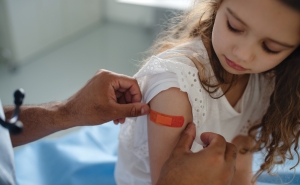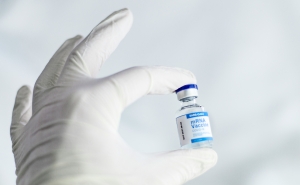
What exactly is emergency use authorization, how does it work, and can we trust it?
During the COVID-19 pandemic, the U.S. Food and Drug Administration has issued many emergency use authorizations—known as EUAs—for tests as well as treatments, including convalescent plasma. Now the agency faces the decision about whether to issue an emergency use authorization for one or more COVID-19 vaccines.
Joshua Sharfstein, MD, the former principal deputy commissioner of the U.S. Food and Drug Administration and now vice dean of Public Health Practice at the Johns Hopkins Bloomberg School of Public Health, breaks down EUAs in a Q&A drawn from his September 4 conversation with Stephanie Desmon on the Public Health On Call podcast.
Q&A
What is an emergency use authorization (EUA)?
In an emergency, like a pandemic, it may not be possible to have all the evidence that the FDA would usually have before approving a drug, device, or a test.
When there is a declared emergency, the FDA can make a judgment that it's worth releasing something for use even without all the evidence that would fully establish its effectiveness and safety. If there’s evidence that strongly suggests that patients have benefited from a treatment or test, the agency can issue an EUA to make it available.
How long have EUAs been around?
Emergency use authorization is a relatively new tool for the FDA. In fact, when I was the acting commissioner at FDA in 2009, before I became the principal deputy, I signed the first emergency use authorization the agency had ever put forward for the civilian population.
What was authorized?
During the H1N1 pandemic, there was a question of using Tamiflu—which was a medication for flu which had dosing approved by the FDA—for very little babies. People were worried that H1N1 could affect them, but Tamiflu hadn’t been well studied for infants.
So, we brought together the best minds at the FDA to come up with a recommended dosing for young infants. We did an emergency use authorization to provide this official recommendation to clinicians.
Ordinarily, it might require special studies to come up with a dose for infants, but we didn't have time for that. We wanted to make sure that people had the benefit of the best evidence. And we thought this was a reasonable approach based on their expertise about how babies would metabolize the medication.
How often is EUA granted?
Outside of a declared emergency, never. The agency doesn’t have the power to issue an EUA without a declared emergency. The agency has issued EUAs for anthrax, ebola, enterovirus, H7N9 influenza, and Middle East respiratory syndrome.
Is there a minimum requirement for the FDA to consider issuing an EUA?
Yes. One of the minimum requirements is that the known and potential benefits outweigh the known potential risks.
That is the minimum requirement. It is not the standard for an authorization. You can have that requirement met and still not give the authorization. You still need a good reason to do the authorization—such as that the product meets reasonable thresholds for safety and effectiveness and people are in urgent need of care.
What are some other well-known treatments or tests that have received EUA? Has there ever been something that turned out to be harmful?
FDA issued an EUA for hydroxychloroquine during the COVID-19 crisis. There wasn’t much information to support its use at the time. Later, when it became clear that this treatment posed a risk but did not offer benefit, FDA retracted the EUA.
What might keep a potentially beneficial treatment from receiving EUA?
In many cases, it may make more sense to wait for research to show a treatment or vaccine really works rather than make it available under an EUA because it might work.
How would we know if a treatment that’s received EUA from the FDA is actually safe?
FDA should explain the basis of its decision to authorize the vaccine, which should include its assessment of safety.
Could we see EUAs for COVID-19 vaccines?
Yes. FDA has released guidance explaining the conditions that need to be met before a vaccine receives an EUA for COVID-19. For effectiveness, this includes at least a 50% reduction in coronavirus infection. For safety, this means a strong track record through at least a median of two months of follow-up time.
FDA has promised to consult with an independent advisory committee before making a decision. I think it's very important that when an advisory committee is convened, they're not just asked narrow questions, that they're really weighing in on the fundamental policy challenges that are facing the agency and are deliberating the key issues.
If the FDA does issue an EUA for a vaccine, the agency should explain the difference between an EUA and full licensure of a vaccine.
Joshua Sharfstein is the vice dean for Public Health Practice and Community Engagement at the Bloomberg School and the director of the Bloomberg American Health Initiative. He is a cohost and producer of the Public Health On Call podcast.
RELATED CONTENT
Public Health On Call
This conversation is excerpted from the September 4 episode of Public Health On Call.





